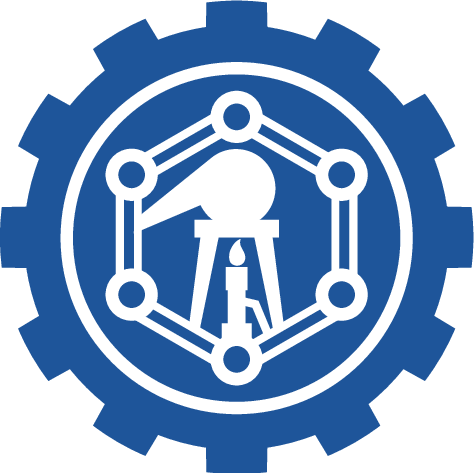Topics for final examination Industrial and Engineering Chemistry (I st.)
- Pascal’s law and its employment in techniques.
- Continuity equation. The average fluid velocity in a pipe.
- Laminar and turbulent flow in a pipe.
- Bernoulli equation for steady-state fluid flow of ideal liquid. Corrections for Newtonian liquid.
- Transport of liquids. A pump delivery head and a pump efficiency. The working point for the impeller pump.
- Pumps. Design and selection.
- Fans, compressors, vacuum pumps. Design and selection.
- Transport of bulk materials. Conveyers design and selection.
- Steady-state and unsteady-state discharge of liquid from a tank. Calculation of discharging time.
- Simple cases of stresses in strength of materials.
- Creep phenomenon. Creep diagram and creep limit.
- Fatigue phenomenon. Fatigue diagram and endurance limit.
- Valves. Design and selection.
- Heat transfer – basic mechanisms and laws.
- Determination of overall heat transfer coefficient.
- Design and calculation of heat exchangers. Basic constructions of heat exchangers.
- Types of diffusion. Role of diffusion in technology and nature.
- General balance of mass exchanger.
- Hydrodynamic aspects in packed-bed scrubbers.
- Balance of forces during the fall of single spherical particle.
- Surface filtration process. Influence of cake compressibility.
- Determination of mixing power for rotational impellers.
- Pneumatic conveying of granular materials. Advantages and disadvantages of this process.
- Fluidization process. Dependence of Dp = f(wg0) for a fluidized bed.
- Importance of separation processes in chemical engineering.
- Process of distillation and its basic rules.
- Two-component batch rectification. Main difference between continuous and batch rectification.
- Temperature of wet-bulb thermometer and its practical usage.
- Drying kinetics, critical and equilibrium moisture content.
- Arrhenius equation.
- Rate of chemical reaction and definition of conversion degree. Types of chemical reactions.
- Mass balance for tank and tube reactors. Cascade of tank reactors.
- Types of catalysts. Methods used for estimation of catalyst properties.
- Devices employed in dust removal and how they are selected.
- Methods used for removal of dust from air and flue gases.
- Apparatuses and devices used in wastewater treatment.
- Kinetics of Michaelis-Menten enzymatic reactions.
- Types of bioreactors – advantages and disadvantages.
- Growth kinetics of biomass.
- Aerosphere, its composition and types of contaminants. Ozone layer degradation. Greenhouse effect.
- Acid rains phenomenon. Acidic and photochemical smog.
- Main sources of renewable energy and possibilities of their usage.
- Bohr model of hydrogen atom. Can You find a reason for the 1st Bohr’s postulate considering standing electron waves on circular orbits?
- Maxwell equations in differential and integral form.
- Interpretation of the Schrödinger equation – meaning of parameters, interpretation, principles by which it is derived.
- Relation of de Broglie principle to the Heisenberg's uncertainty principle. Think about probability distribution in space for a single de Broglie wave, and, about a concept of the more localized “wave packet”.
- Anti-symmetric wave functions are used to describe fermions. Considering two particles, located at positions +/- x0 – why can’t the distance between them in anti-symmetric wave function reduce to zero? How is this related to Pauli's exclusion principle?








